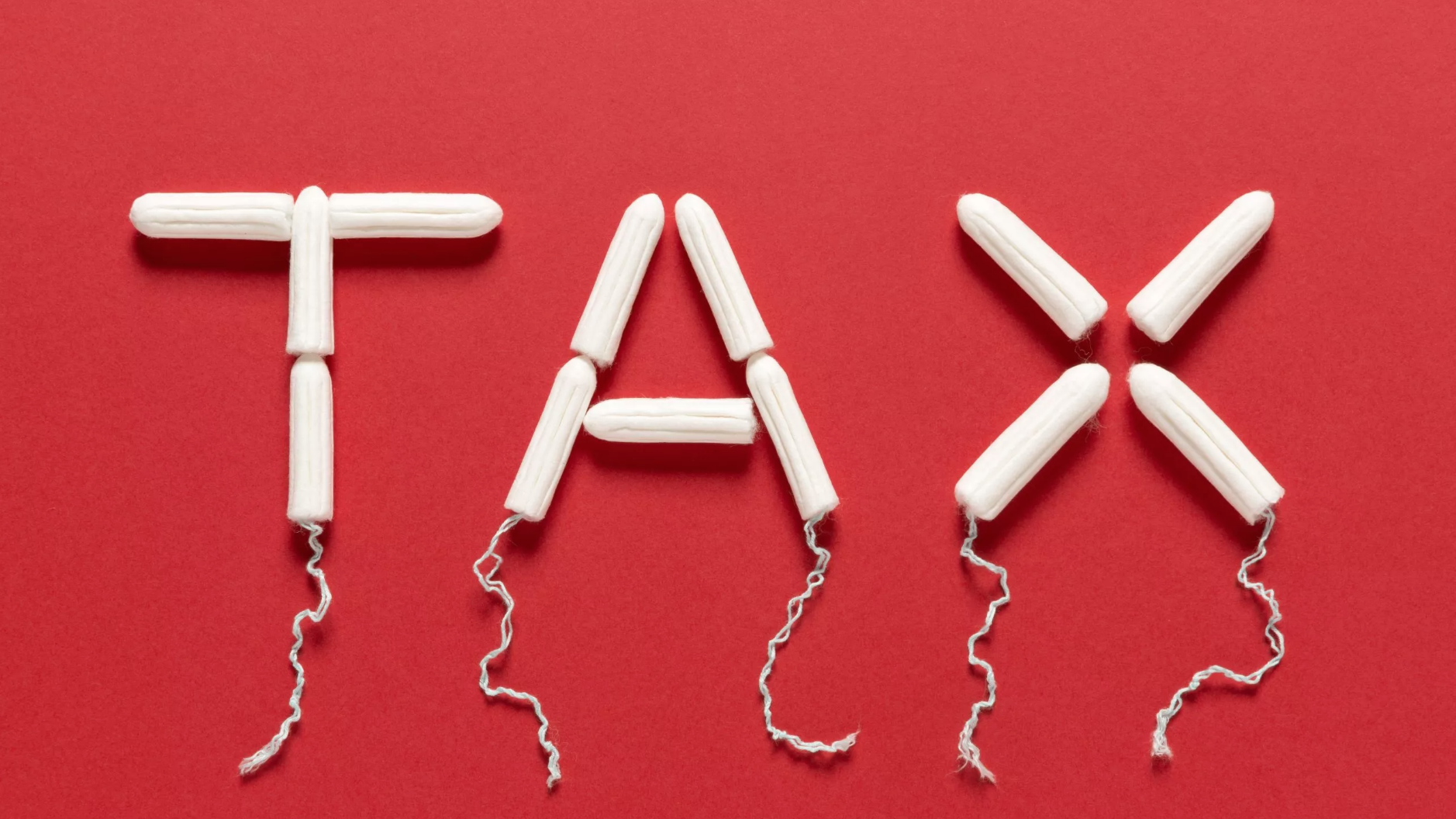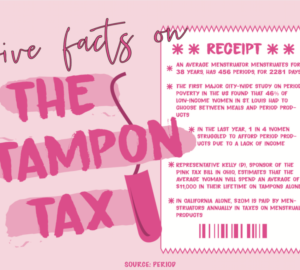Tackling the Tampon Tax
By Mary Burdick
States across the country are handling lawsuits against the taxation of tampons and other menstrual hygiene products. Many people argue that the taxation on such products unfairly impacts the female gender, and thus should be ruled unconstitutional. This is because the tax violates the equal protection clause in the Constitution.
The argument is also focused on the necessity of such products. While becoming pregnant is deemed a ‘choice’ by many, menstruation is not a choice. Paying for such menstrual hygiene products weekly for years of life can ultimately add up to a lot of money, and can cause significant strain on budgets. A box of tampons made for one cycle costs anywhere from 4 to 10 dollars. Taxing such products overtime adds up as well.
While certain states, such as California, Florida, and Ohio have already dropped the tax, many states are not yet on board with dropping the tax. However, there is much hope and persistence on behalf of the anti-MHP tax community.

Exposing the Lack of Female Healthcare Resources During the Pandemic
By Chloe Robinson
Covid-19’s impact on national healthcare seems to be more detrimental to women, a new study shows. The Kaiser Family Foundation, or KFF, conducted a study late last year. The study unveiled harrowing statistics: “More than one-third (38%) of women had skipped preventive services, such as checkups or routine tests, during the pandemic. Nearly one-quarter (23%) had forgone a recommended test or treatment. In comparison, only 26% and 15% of men had missed preventive or recommended care, respectively.”
Women are frequently affected disproportionately in American society, and as Dr. Sonia S. Hassan, professor of obstetrics and gynecology and associate vice president in the Office of Women’s Health at Wayne State University, notes: “The fact that women are more likely than men to delay their healthcare services is not surprising, as women have been disproportionately burdened with child and household care, home schooling and, in many cases, an inability to maintain employment due to the many obligations placed upon them.”
The survey demonstrated that those who needed the healthcare the most were also the ones who skipped it, with half of women in “poor or fair” health skipped prevented or recommended care, while healthier women stood at a staggering 57%. The study also found that women with higher income rates were also those who skipped preventive care more often than lower income women. According to the study, “Forty percent of women with incomes above 200% of the federal poverty level—or just under $26,000 per year—reported skipping preventive care. Only 33% of women with lower incomes had done so.”
Although lower income women were more likely to use healthcare services, they were also more likely to report not filling a prescription or taking the recommended dose.
Uninsured women were also more likely to take preventative care over women with private insurance or Medicaid.
The implications of the pandemic were also likely to impact the rates of healthcare services; many women, even those who wanted to get recommended healthcare services, were hindered by Covid-19. “Thirty percent of women reported not being able to get an appointment due to the pandemic compared with 20% of men.”
The difficulty of getting appointments seemed to be disproportionate to POC as well: Thirty-six percent of Hispanic women reported difficulties making appointments during the pandemic, compared with 32% of Black women and 28% of white and Asian women.
Although the results of the KFF survey are upsetting and unfortunately convey the harsh reality of America’s flawed healthcare system and gender hierarchy, there is one positive outcome of the study. An increased use of telemedicine has been reported, as “38% of women surveyed had used telemedicine compared with just 13% before the pandemic.”
One of the main reasons for the increased use of telehealthcare was mental health, as 17% of women reported using telemedicine for mental health care.
This telemedicine statistic may not be enough to compensate for the worsening mental health issues throughout the pandemic, as the study reports that “Half (51%) of women surveyed reported that pandemic-related stress or worry impacted their mental health compared to one-third (34%) of men. Among those affected, 21% of women categorized the impact on their mental health as major compared with 17% of men.”
Hassan noticed covid-19’s increased impact on the mental health of pregnant women, as she said that “In our high-risk pregnant population, over 50% experienced anxiety and/or depression during the pandemic.”
“A deliberate effort must be made to design and implement effective interventions that will mitigate the mental effects of the situations and challenges created by the pandemic,” Hassan said.








